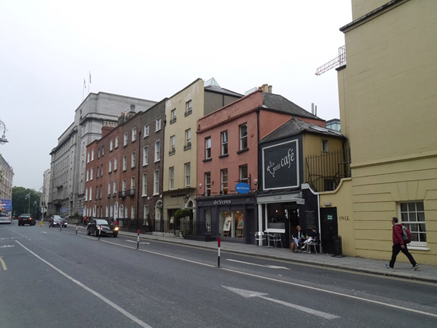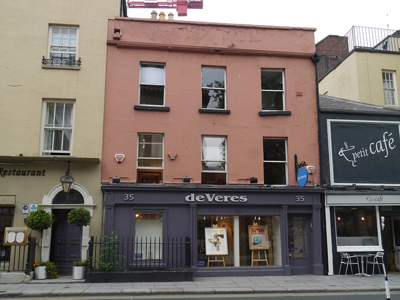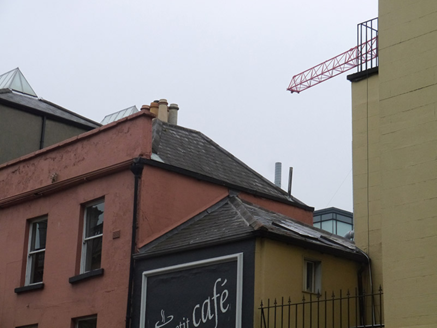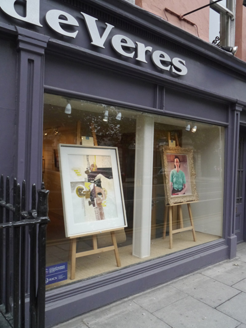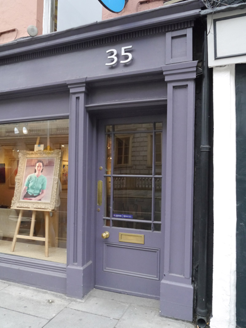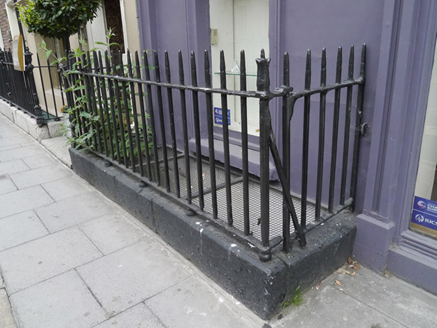Survey Data
Reg No
50100170
Rating
Regional
Categories of Special Interest
Architectural
Original Use
House
In Use As
Shop/retail outlet
Date
1725 - 1760
Coordinates
316238, 233654
Date Recorded
07/06/2016
Date Updated
--/--/--
Description
Attached three-bay three-storey former coach house and stable over partly concealed basement, built c. 1735, converted to dwelling c. 1757, further altered in late nineteenth century. Now in commercial use. M-profile hipped slate roof perpendicular to front elevation, having tall rendered parapet over cornice with painted masonry coping, large yellow brick chimneystack to rear of south part with clay pots, parapet gutters and replacement uPVC downpipes. Painted ruled-and-lined rendered walling; rendered to rear. Square-headed window openings with plain reveals, painted masonry sills, moulded architrave to ground floor opening and one-over-one pane replacement timber sliding sash windows with profiled horns; basement window infilled and ground floor left having fixed timber window. Interwar shopfront with square-headed display window, low masonry stall-riser framed by panelled strips, timber panelled pilasters, fascia with modern signage, and projecting dentillated cornice. Square-headed door opening with timber linings and margin-paned two-thirds glazed timber door with brass furniture. Plain square-headed door opening to basement level with metal sheeting. Basement area bounded by wrought-iron railings over painted masonry plinth. Abutted to north by late nineteenth-century single-bay shop and four-storey eighteenth-century house.
Appraisal
No. 35 Kildare Street was built in the early eighteenth century as a coach and stable house for No. 23 Molesworth Street, but was converted into a dwelling about 1757. The modest scale and proportions contrast with the neighbouring four-storey domestic buildings, while the steeply pitched roofs are an indication that the building may have originally been gable-fronted. Formerly known as Coote Lane, Kildare Street was widened and renamed after 1745, when work on Kildare House began, and soon developed as an exclusive residential thoroughfare. Many houses in the street were built in the mid-1750s by John and George Ensor, and the changes made to No. 35 during this period reflect this burgeoning development and gentrification. No. 35 constitutes an interesting architectural component that contributes to and diversifies the character of this historic streetscape. The simple shopfront and the cast-iron railings to the front enhance this building and its setting.
